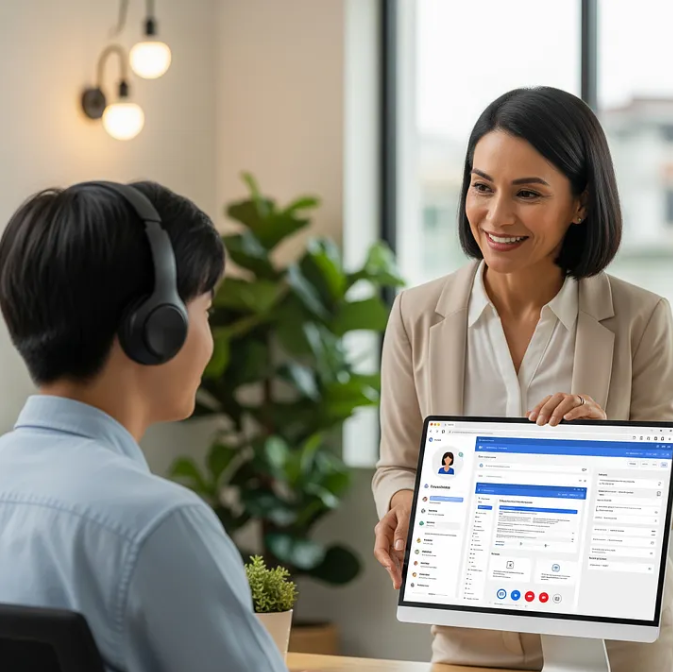.svg)

The Performance Equation: Why Your Rockstar Employees Are Underperforming
Ever hired a top performer who crushed it in the interview, only to see them struggle a few months later? Or watched a high-potential team lose its momentum? Before you blame the individual, you need to look at the full picture. The problem might not be who you hired, but where you put them.
A foundational principle in psychology, developed by Kurt Lewin in the 1940s, gives us a powerful formula to diagnose these situations:
B=f(P,E)
In simple terms: Behavior (B) is a function of the Person (P) and their Environment (E).
This isn't just an academic theory; it's a critical diagnostic tool for any leader. It proves that performance is never just about talent, skills, or motivation in a vacuum. It's about the dynamic interplay between an individual and the professional environment you, as a leader, create for them. Understanding this is the key to unlocking organizational effectiveness.
The High Cost of Misalignment
When an employee's personal characteristics (their work style, needs, goals) align with the environment (team culture, job demands, communication style), they thrive. They are motivated, engaged, and deliver results.
But when there's a misalignment, you see the symptoms that keep managers up at night:
- Frustration and decreased motivation.
- Resistance to change.
- Lowered productivity and burnout.
- Increased employee turnover.
Leaders are often quick to analyze the 'P' (Person) during performance reviews, but they critically underestimate their power to shape the 'E' (Environment).
Lever 1: Master the Forces of Change
In today's volatile business landscape, adaptability is survival. Lewin's theory provides a brilliant framework for managing change. Any change initiative has two sets of competing forces:
- Driving Forces: These push the organization toward the desired change (e.g., a new market opportunity, innovative technology, strong leadership vision).
- Restraining Forces: These hold the organization back, maintaining the status quo (e.g., employee fear of the unknown, legacy systems, a culture resistant to risk).
Many leaders try to force change by simply amplifying the driving forces. Effective leaders focus on identifying and systematically weakening the restraining forces. By understanding what’s holding your team back, you can create a smoother, faster, and more successful transition.
Lever 2: Become an Environment Architect
Behavior isn't random; it's a direct response to the environment. As a manager, you are the primary architect of that environment. Your role is to build a "psychological field" where your team can succeed.
This means being intentional about your team's culture. It can't be an afterthought; it must be a core part of your strategy. This conscious approach is highly effective for:
- Resolving conflicts and improving interpersonal relationships.
- Managing team-wide stress.
- Making culture a key part of your interview and selection process to ensure alignment from day one.
The Blueprint: How to Engineer a High-Performance Environment
This all sounds great, but how do you actually do it? You move from guesswork to a strategic framework by qualifying and quantifying the two core components of the equation:
- Work Styles (The 'P'): These are the individual preferences that define how a person works best. You can measure these across key spectrums like:
- Collaboration vs. Individual Contribution
- Risk-Taking vs. Certainty-Seeking
- Approach-Motivated vs. Avoidance-Motivated
- Big-Picture Thinking vs. Detail-Orientation
- Team Culture (The 'E'): This is the collective environment defined by a team's shared values and expectations. It can be mapped across categories like:
- Decision Making (Top-down vs. Consensus)
- Support (High vs. Low psychological safety)
- Attitude toward Failure (Punished vs. Learned from)
- Clarity of Mission
Once you map an individual's Work Style against the Team Culture, and layer in their skills, you have a complete picture. You can predict success, diagnose friction, and begin strategically mapping short- and long-term growth for every single team member.
Your Competitive Edge Is Your Environment
Implementing this framework is faster and easier than you think, and the long-term ROI is immense. In a world where you are competing for the best talent, your advantage won't just be who you hire, but the environment you build to retain and empower them.
Stop trying to fix people. Start designing the environment where they are destined to succeed. Your competition is already thinking about it—the time to begin is now.
Latest Articles
Interviews. Applications. Candidate recruiting. Employee onboarding. The world of recruiting has no limit. Start with our blog if you don’t know where to begin.




